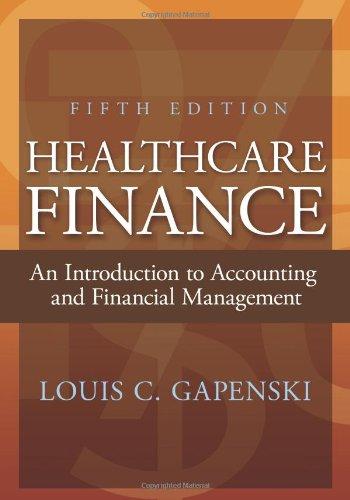Calculating annual investment to meet retirement goal Use Worksheet 14.1 to help Georgia and Jude Sullivan determine how much they need to retire early in about 20 years. Both have promising careers, and both make good money. As a result, they're willing to put aside whatever is necessary to achieve a comfortable lifestyle in retirement. Their current level of household expenditures (excluding savings) is around $84,000 a year, and they expect to spend even more in retirement; they think they'll need about 125% of that amount. (Note: 125% equals a multiplier factor of 1.25). They estimate that their Social Security benefits will amount to $28,000 a year in today's dollars and they'll receive another $37,000 annually from their company pension plans. Georgia and Jude feel that future inflation will amount to about 3% a year, and they think they'll be able to earn about 6% on their investments before retirement and about 4% afterward. See Appendix A and Appendix B. a. Use Worksheet 14,1 to find out how big Sullivans' investment nest egg will have to be. Round your answer to the nearest dollar. b. How much they'll have to save annually to accumulate the needed amount within the next 20 years. Round your answer to the nearest dollar. D G H M N 1 2 PROJECTING RETIREMENT INCOME AND INVESTMENT NEEDS 4 Name(s) Date 9 % 17 $ 71. Estimated Household Expenditures in Retirement: 19 A. Approximate number of years to retirement 11 B. Current level of annual household expenditures, excluding savings 13 C. Estimated household expenses in retirement as a percent of current 14 expenses 16 D. Estimated annual household expenditures in retirement (BXC) 18 II. Estimated Income in Retirement: 20 E Social security, annual income 22 F. Company/employer pension plans, annual amounts 24 G. Other sources, annual amounts 26 H. Total annual income (E+F+G) 28 1. Additional required income, or annual shortfall (D-H) 30 Ill. Inflation Factor: 32 J. Expected average annual rate of inflation over the period to retirement 34 Ki Inflation factor (in Appendix A): Based on 0 years to BS retirement (A) and an expected average 36 annual rate of inflation (J) of 0% $ $ $ $ $ $ 2 % 1.000 WE 1 1.000 % retirement (A) and an expected average 6 annual rate of inflation (1) of 0% 8 L Size of inflation-adjusted annual shortfall (1 x K) IV. Funding the Shortfall: 2 M. Anticipated return on assets held after retirement N. Amount of retirement funds required-size of nest egg (L+M) 0. Expected rate of return on investments prior to retirement P. Compound interest factor in Appendix B): Based on O years to retirement (A) and an expected rate of return on investments of 0% a. Annual savings required to fund retirement nest egg (N+P) % 0.000 Note: Parts I and II are prepared in terms of current (today's) dollars. WS_14.1 Calculating annual investment to meet retirement goal Use Worksheet 14.1 to help Georgia and Jude Sullivan determine how much they need to retire early in about 20 years. Both have promising careers, and both make good money. As a result, they're willing to put aside whatever is necessary to achieve a comfortable lifestyle in retirement. Their current level of household expenditures (excluding savings) is around $84,000 a year, and they expect to spend even more in retirement; they think they'll need about 125% of that amount. (Note: 125% equals a multiplier factor of 1.25). They estimate that their Social Security benefits will amount to $28,000 a year in today's dollars and they'll receive another $37,000 annually from their company pension plans. Georgia and Jude feel that future inflation will amount to about 3% a year, and they think they'll be able to earn about 6% on their investments before retirement and about 4% afterward. See Appendix A and Appendix B. a. Use Worksheet 14,1 to find out how big Sullivans' investment nest egg will have to be. Round your answer to the nearest dollar. b. How much they'll have to save annually to accumulate the needed amount within the next 20 years. Round your answer to the nearest dollar. D G H M N 1 2 PROJECTING RETIREMENT INCOME AND INVESTMENT NEEDS 4 Name(s) Date 9 % 17 $ 71. Estimated Household Expenditures in Retirement: 19 A. Approximate number of years to retirement 11 B. Current level of annual household expenditures, excluding savings 13 C. Estimated household expenses in retirement as a percent of current 14 expenses 16 D. Estimated annual household expenditures in retirement (BXC) 18 II. Estimated Income in Retirement: 20 E Social security, annual income 22 F. Company/employer pension plans, annual amounts 24 G. Other sources, annual amounts 26 H. Total annual income (E+F+G) 28 1. Additional required income, or annual shortfall (D-H) 30 Ill. Inflation Factor: 32 J. Expected average annual rate of inflation over the period to retirement 34 Ki Inflation factor (in Appendix A): Based on 0 years to BS retirement (A) and an expected average 36 annual rate of inflation (J) of 0% $ $ $ $ $ $ 2 % 1.000 WE 1 1.000 % retirement (A) and an expected average 6 annual rate of inflation (1) of 0% 8 L Size of inflation-adjusted annual shortfall (1 x K) IV. Funding the Shortfall: 2 M. Anticipated return on assets held after retirement N. Amount of retirement funds required-size of nest egg (L+M) 0. Expected rate of return on investments prior to retirement P. Compound interest factor in Appendix B): Based on O years to retirement (A) and an expected rate of return on investments of 0% a. Annual savings required to fund retirement nest egg (N+P) % 0.000 Note: Parts I and II are prepared in terms of current (today's) dollars. WS_14.1









